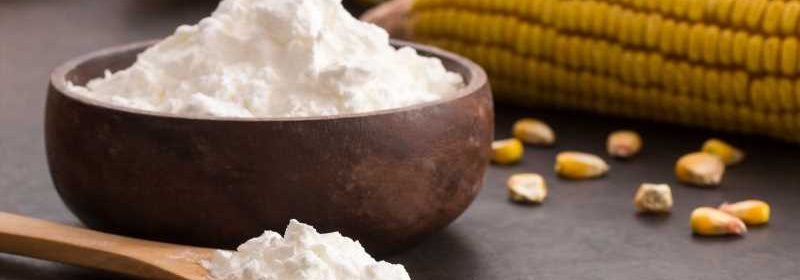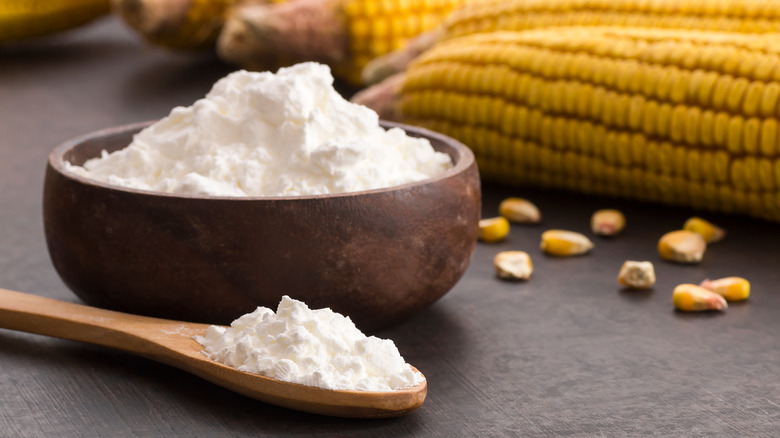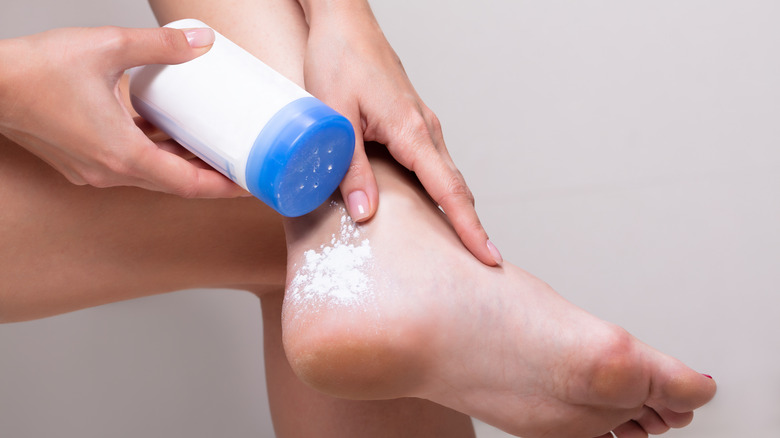This Is Why You Should Always Have Cornstarch In Your Home

Along with potato and tapioca starch, cornstarch is a popular thickening agent and can be found in soups, sauces, stir-fries, and chicken wings. It can also improve the texture and consistency of baked goods, from cakes and brownies to pies. On top of that, it’s gluten-free (per BAKERpedia). Just make sure you check the label to ensure it wasn’t processed in a facility that also processes wheat and other gluten-containing foods.
This common ingredient comes from the endosperm of the corn kernel, explains BAKERpedia. It contains amylose and amylopectin, two molecules that absorb moisture and increase in size when heated in water. This gives cornstarch its thick texture after cooking. You can even use it as a substitute for wheat or rye flour in some recipes. Verywell Fit recommends using half as much cornstarch or other starches as flour.
Besides its role as a thickening agent, cornstarch has various uses outside the kitchen. For example, it can be found in baby powder, adhesives, and bioplastics. Some manufacturers add cornstarch to packaged goods due to its ability to absorb moisture. The starch can also stabilize ingredients and prevent them from separating, notes the Corn Refiners Association. Here is why you should always have it in your home.
Cornstarch will transform your skincare routine
This may come as a surprise, but cornstarch has many applications for your body. Pure cornstarch can be used as a natural antiperspirant, a chafing solution, a dry shampoo, and an emollient. WebMD, for example, recommends mixing it with baking soda and then applying it to your underarms. The starch will absorb excess sweat, keeping you dry. You can also apply cornstarch to your scalp to freshen up greasy hair. This trick can do wonders between washes!
Running a marathon or breaking a sweat on your exercise bike? Use cornstarch on the inside of your thighs to prevent chafing. This common ingredient may also help prevent intertrigo, a type of rash that occurs between skin folds (via American Family Physician). If you’re prone to athlete’s foot, put some cornstarch in your shoes to reduce excess moisture. Some people also use cornstarch to soothe skin irritation caused by sunburn, blisters, or rashes, but it’s safer to stick to pharmaceutical products.
Some beauty bloggers recommend using cornstarch as a setting powder, saying that it eliminates shine. That’s not a good idea, though. “Cornstarch is a food source with no preservatives, so when exposed to moisture it can breed fungal or bacterial substances,” master aesthetician Tiffany Crews told Woman’s Day. “This can happen if someone starts to sweat while the cornstarch is present on her face, which can lead to breakouts and inflammation.” There is also a risk of allergic reactions, she added. Likewise, you shouldn’t use cornstarch for contouring or exfoliation.
Source: Read Full Article

